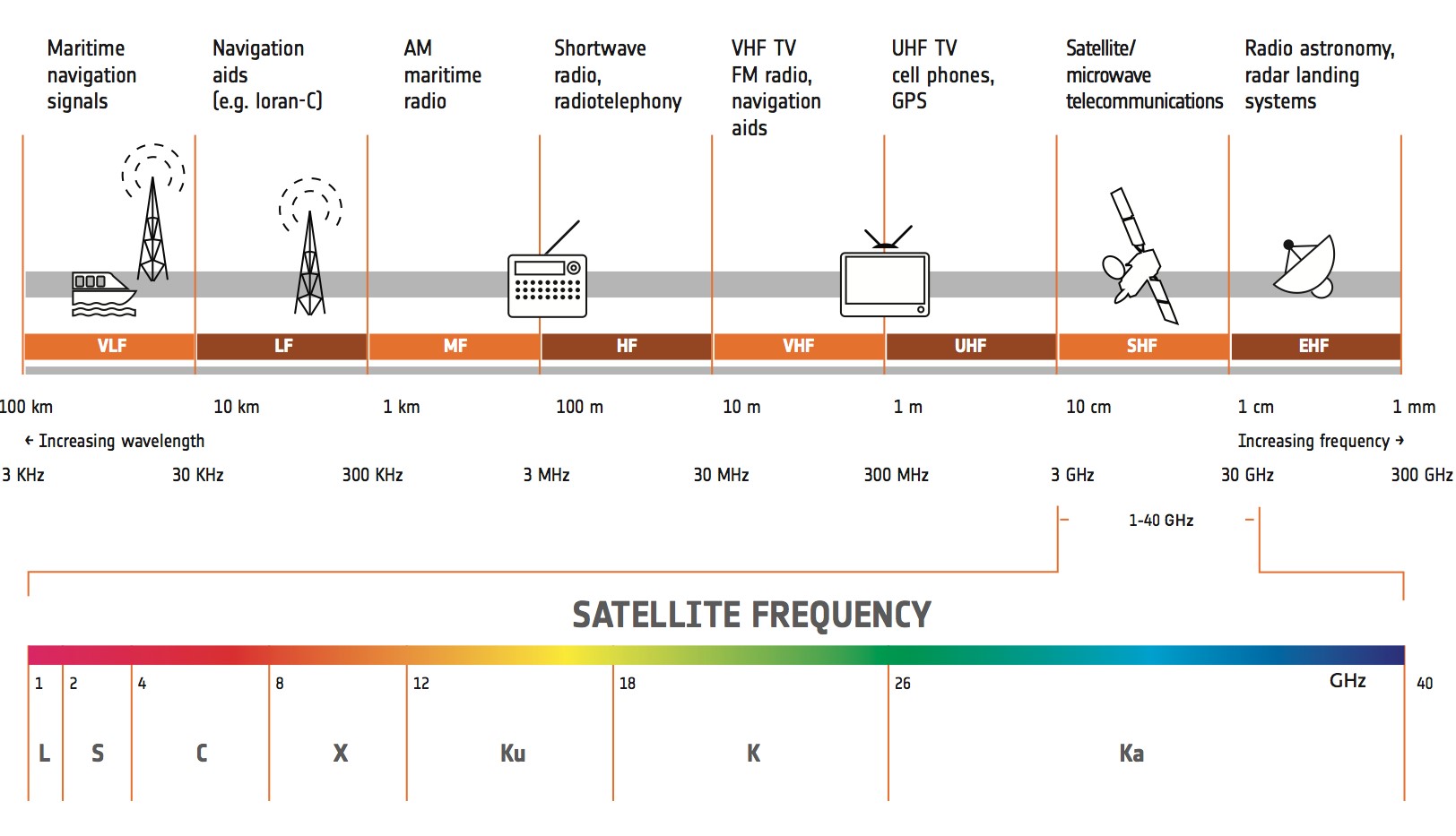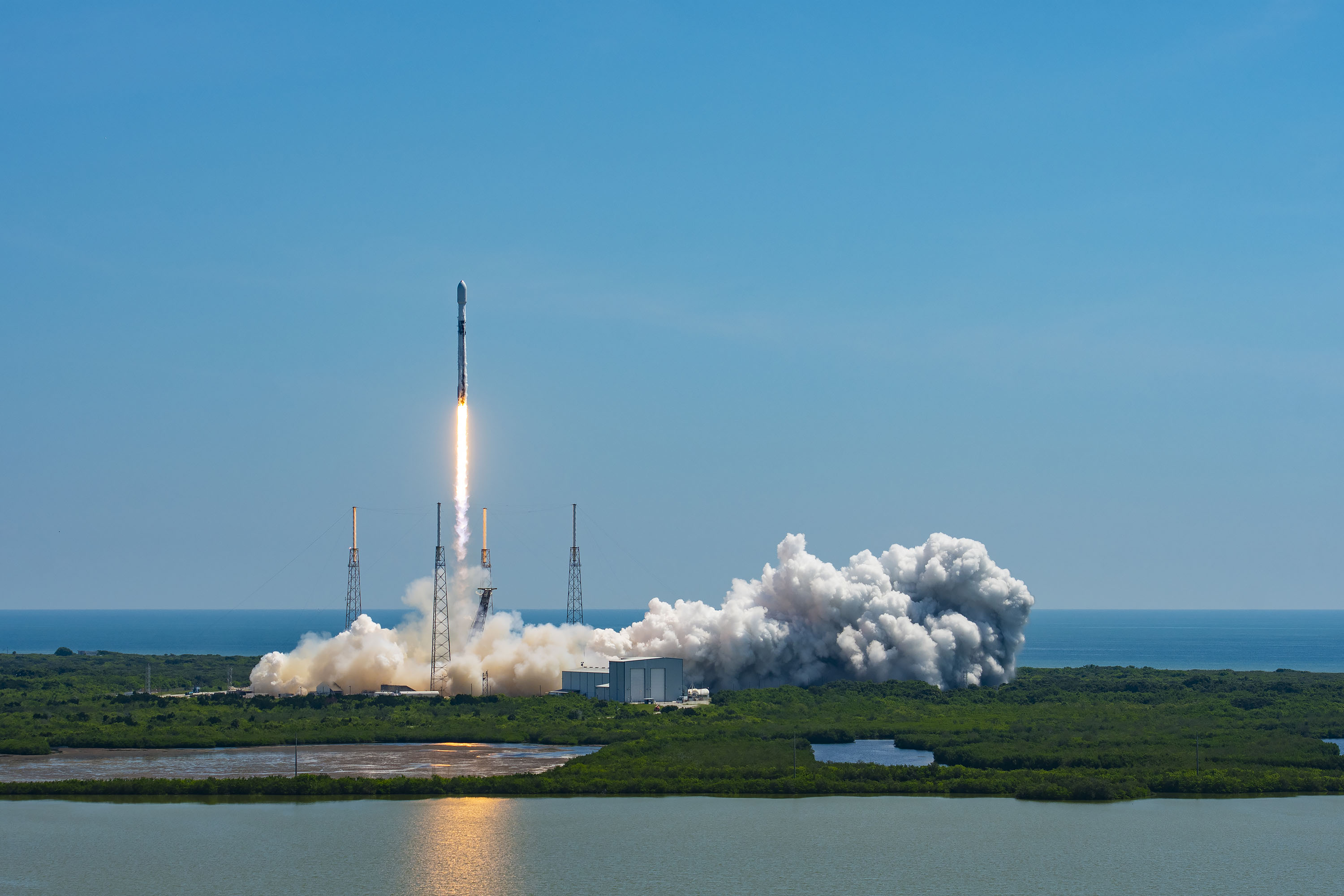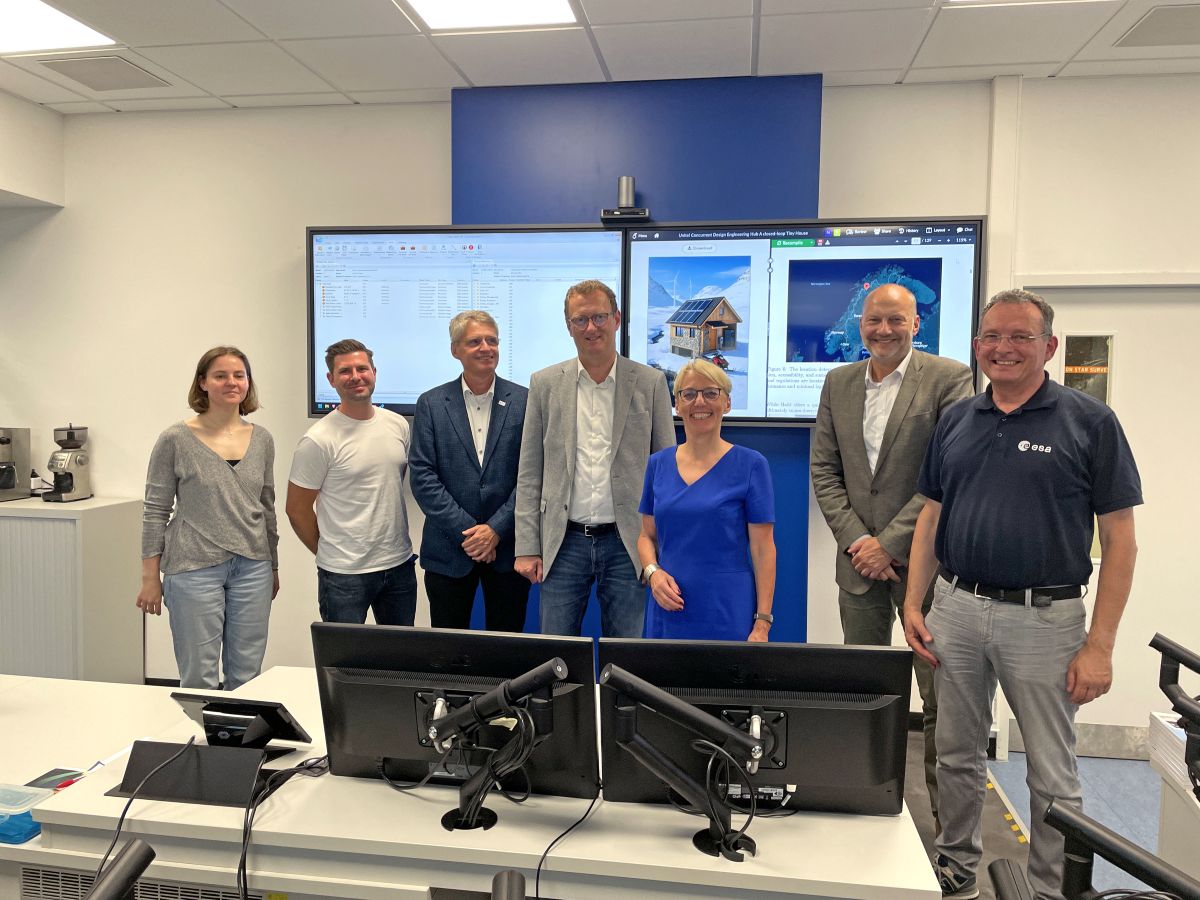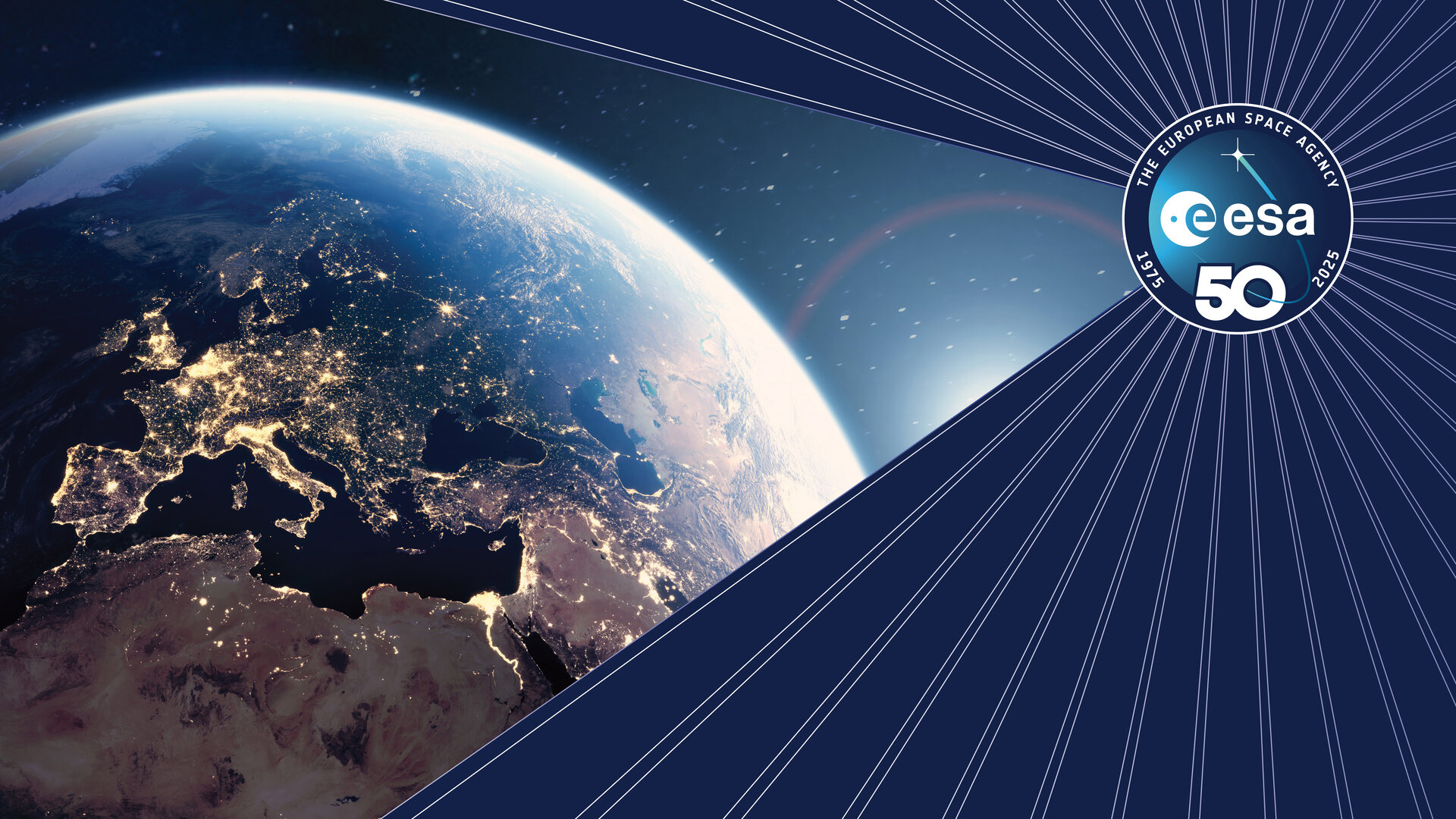Euclid's ground segment: prepared to download the Universe
Euclid, ESA’s exciting new science mission, will soon start collecting scientific data to explore the composition and evolution of the dark Universe. It will then send it home, transmitting an unprecedented volume of data from beyond Earth’s orbit, about 100 GB every day for six years straight.
Downlinking this much data from the spacecraft places high demands on Euclid’s ground segment, the complex combination of data systems on Earth for monitoring and control of the spacecraft, data management, ground stations and telecommunication networks.
“Through years of technological advancements, standardisation efforts and the operational adoption of innovative engineering solutions we have successfully tackled the challenges for the ground segment of this extraordinary mission,” says Mariella Spada, Head of Ground Systems Engineering and Innovation at ESA.
As we zoom in on the ground segment preparations for Euclid, the engineering complexity behind the mission’s data operations comes to light.
Creating a conduit for Euclid’s science data
Every science mission has its own unique constraints and requirements as a consequence of its desired scientific return. In the case of Euclid, it is designed to create the largest, most accurate-ever 3D map of the Universe. Euclid’s instruments collect ultra-accurate images in order to identify faint distortions in the shape of very distant galaxies.
The value of these images lies in their incredible preciseness and detail. This takes the image file size into the gigabytes and leads to the key challenge for the mission’s ground segment: get up to 100 GB of big files downlinked every day during a limited, four-hour time window.
That’s roughly twice the daily data volume that space telescopes like James Webb and Gaia transmit from the same orbit at Lagrange 2 point about 1,5 million kilometres from Earth, and that while Euclid has shorter ground station passes. This means that Euclid’s ground segment must be an especially efficient conduit to enable the large flow of data between Euclid and Earth, and onwards to deliver it to the science project teams.

ESA deep space antenna Cebreros in Spain, one of the two Estrack antennas upgraded for Euclid
Upgrading deep space antennas Cebreros and Malargüe
The first step was to make it possible to sustain a high data downlink rate of up to 75 megabits per second between Euclid and the Estrack ground stations to download all its data comfortably and efficiently within four hours.
In contrast, ESA's Gaia mission, sending data to Earth from a similar L2 orbit as Euclid, uses the X-band with an 8 GHz frequency to transmit telemetry. The bandwidth of this low frequency only allows a maximum data rate of 8.7 Mbps, which means that Gaia needs close to 24 hours of data downlink on a high data volume day. As Euclid will be sending us on average twice the data that Gaia does, the same X-band frequency would require more hours of transmission than there are in a day, and would hopelessly congest the ground stations.
Higher frequencies are used for interplanetary missions in deep space, especially the Ka-band in 32 GHz. These frequencies enable a higher 'link budget' with more capacity to reach as far as such deep-space missions require. The higher frequencies also allow a higher data rate.
Euclid will still be relatively close to Earth at a distance of ‘just’ 1.5 million kilometres. But to allow a high volume of data to be downlinked in a four-hour daily window, the K-band radio frequency (26 GHz) will be used the first time for an ESA science mission at the Lagrange 2 point.

Image: Satellite frequency bands
However, to allow the high data rate in K-band, two of ESA’s 35 m dish Estrack ground stations had to be upgraded in various ways.
“Faster communication lines were installed between the control centre in Germany and the ground stations located in Spain and Argentina. And that’s just the start of the list," says Åge-Raymond Riise, Station Coordinator for Euclid.
“We have four new cryogenically cooled low-noise amplifiers in each station for receiving the signals from space. We also use a new generation of ground station modems known as Telemetry and Telecommand Processors, capable of using the Low Density Parity Check codes which brings us ever closer to the theoretical Shannon Limit for a space link communication channel. In order to route the signal mechanically to the new equipment, moving mirrors were built, together this provides our deep space antennas Cebreros and Malargüe, with K-band communication capability at 26 Ghz."
And that was not all. Although the 26 GHz frequency benefits large data volumes, the connection itself is less stable. K-band frequencies in general are prone to suffer high attenuation and the signal may be weak or lost due to the influence of water in the atmosphere, potentially causing data loss. Further engineering went into safeguarding against such data loss, benefiting not just Euclid but also other ESA missions that also use high frequencies.
Adding a black box to the ground stations
When receiving a transmission at a ground station, the useful data is extracted from packets that function like a kind of envelope with instructions. The unpacked, uncoded data constitutes only about half the data Euclid sends. This is then sent on to mission control at ESA’s European Space Operations Centre (ESOC), in Darmstadt, Germany, through a private, secure connection established especially for this purpose.
Normally, the check for data completeness is done at the mission control centre, followed by sending a command to the spacecraft to retransmit data if necessary.
“In this case, the link between Euclid itself and the ground stations at Cebreros or Malargüe is much faster than the connection from the ground stations to mission control at ESOC.” explains Arek Kowalczyk, Euclid Data Systems Manager. “We can’t afford to wait until all data has arrived at the mission control system to check if any part is missing. Instead, we developed a piece of software that runs on a Euclid-dedicated machine at the ground station. It consolidates the parts of a data file and forwards only the instructions concerning any missing data to the mission control system at ESOC, from where they can request the missing parts to be retransmitted to ground. Only once the file is complete, is it transferred to ESOC.”
This new file transfer protocol dubbed CCSDS File Delivery Protocol was utilised as part of an integrated software solution consisting of a ‘black box’ at the ground station called the CFDP assembly. This assembly, combined with the mission control system at ESOC, provides an automated solution that avoids data loss and allows any required retransmission to be performed automatically.
“Let’s call it FTP for space.” says Micha Schmidt, Euclid’s Spacecraft Operations Manager, referring to the common and widely used File Transfer Protocol.
“Imagine you want to download a picture from the internet. You’re not interested in how much data needs to be re-transmitted and you definitely don’t want to identify the missing information and request them bit-by-bit yourself. You just want to see the picture on your screen once the transfer is complete. That is what the CFDP assembly is doing for us.”
CFDP has been used by ESA’s OPS-SAT test-bed satellite and is being used by interplanetary mission Juice to check certain downlinked data. Euclid, however, is the first to also use it in the other direction, for uplinking to the spacecraft.

Euclid looking into the Universe
Dragging and dropping files to space
Euclid’s ground segment and on-board data handling system are also the first to take the word ‘file’ in the CFDP acronym seriously, compelled by the large images Euclid creates. The storage system on Euclid can handle any kind of files and not only the usual data packets which have stringent data formatting requirements.
This opened the door to File-Based Operations and its many accompanying advantages, some of which we are all familiar with in our everyday dealings with computers. The flight controllers now have a much more intuitive, graphical interface rather than a DOS-like command line interface. This lowers the complexity and reduces both the potential for human error and the amount of training required. It even allows the operators to drag and drop files to upload to, or download from, Euclid in space.
Most importantly perhaps, scientists don’t need to format their data in a specific way. They can have their instruments create whatever file format works best for them, and they receive their files exactly as they want them. Like very large, intricate images for instance.
Keeping up with Euclid
The launch of any mission is a critical moment for its ground segment until a connection can be established and the systems are confirmed to work as planned. During Euclid’s launch in July, everything went very smoothly and so far, the commissioning phase is progressing well.
However, for everyone on the team connected to the data operations, the most demanding time is still ahead. Processing of the large amount of data in the tight time windows of the ground station passes will be a relentless task to keep up with Euclid, but it's one they are more than ready for.
“We are now fully prepared to download the 'Universe' from Euclid,” says Mariella Spada. “This is the result of the hard work and resourcefulness of the team, along with many colleagues from ESA and beyond who contributed to this success.”

Euclid lifted off on 1 July 2023, is currently in the commissioning phase and will soon start sending its science data to Earth



